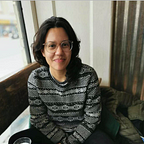Why we started out with ways of working
Starting out
Two service designers, who started within a week of one another, were assigned with a new project in the customer journey team at Citizens Advice. Our task was to research and map out the as-is journey for users coming online for advice.
This blog tells the story of the different ways we established useful ways of working such as collaborating and supporting one another which helped us grow into a multidisciplinary team. By harnessing a kind team culture we improved how well the team worked together to deliver better quality and more robust outputs.
Service design on project teams
Service design is a new and still evolving discipline. Often, the role a service designer takes will depends on the demands of the project and the environment they’re working in. In this situation, we were both familiar with project management and delivery support so we set up all usual processes and ceremonies. This included planning, retrospectives and updating one another as we learnt something interesting or surprising. This helped us get to know one another, be open about our strengths and the type of environment that help us work and provide psychological safety.
Tools for collaboration
Having visibility of one another’s work helped us combine assumptions to reach well-rounded hypotheses. For example, if we learnt something similar but slightly different about our users, we could come to an agree about what this was telling us. We used the ‘Pivotal Research Iteration’ trello board and Miro collaboration board to gather our findings and plot our evidence instead of a physical wall. We referred to these in daily stand-ups to share 3 new insights each and updated the tools together.
This often meant stand-ups overran as they delved into discussions. However, the extra time spent helped mitigate biases we may individually have held. When working in silos, biases can creep in as we can become fixated on answering particular questions or validating a hypothesis we believe is true. Sharing insights on a daily basis helped to keep us focused on what we needed to know rather than getting too deep in the detail.
Ways of working
As we expanded to welcome a user researcher, UX designer and product lead to the team we set up a ways of working session. Using inspiration from Cassie Robinson’s blog we completed user manuals in the session and shared these with one another. By explicitly being open about our personal goals we came to realise overlap in each other’s ambitions and values. This acted as a driver for the team as we acknowledged that we were working with others with a similar purpose; to improve how people get advice.
Shaping the team
As we were reaching the end of discovery, there was scope to shape the role of design for the team in the next phase. With this in mind, the user experience designer and service designer met to speak about our developmental goals and explore any overlap in our interests. This conversation was had at ease because trust had been generated within the team.
Off the back of this, we are looking to run a ‘skills analysis marketplace session’ for the whole team as outlined by Samantha Webb in this blog. This is to bring about fluidity between our roles and allow us to observe, learn from and support each other with unfamiliar areas of work. It provides an opening for those with skills in a particular area to support others who want to develop those. I look forward to how we can support one another to grow and explore new interests out of our comfort zones in a safe space.
Agreeing direction as a team
As we had completed the discovery phase, we needed to prioritise what to work on next. To objectively evaluate which of our strongest hypotheses we should act on in the next phase, we ran an ‘insight poker session’ with the whole team. This involved each of us individually voting on a set of criteria which is generally related to impact and feasibility. We used:
- How clear were we about the problem?
- How much demand was there in the organisation to solve it?
- How much impact would it have on the project’s goal/ mission?
- Do we have the resource and expertise in the team?
If there was a lot of deviation between people’s scores, we would discuss why to provide a fuller reflection from different perspectives. This gave a more robust analysis of what would be most useful to take forward into the next phase.
In a multi-disciplinary team, we all come with different expertise and can add value or a different dimension when considering a problem or building a proposition. This is best reached when you are already working in an open, transparent environment where everyone has the opportunity to voice their opinion and feels part of setting direction and reaching decisions. The initial time taken to set up ways of working, establish ceremonies and set the vision of the project has enabled us to grow into an effective multidisciplinary team.
